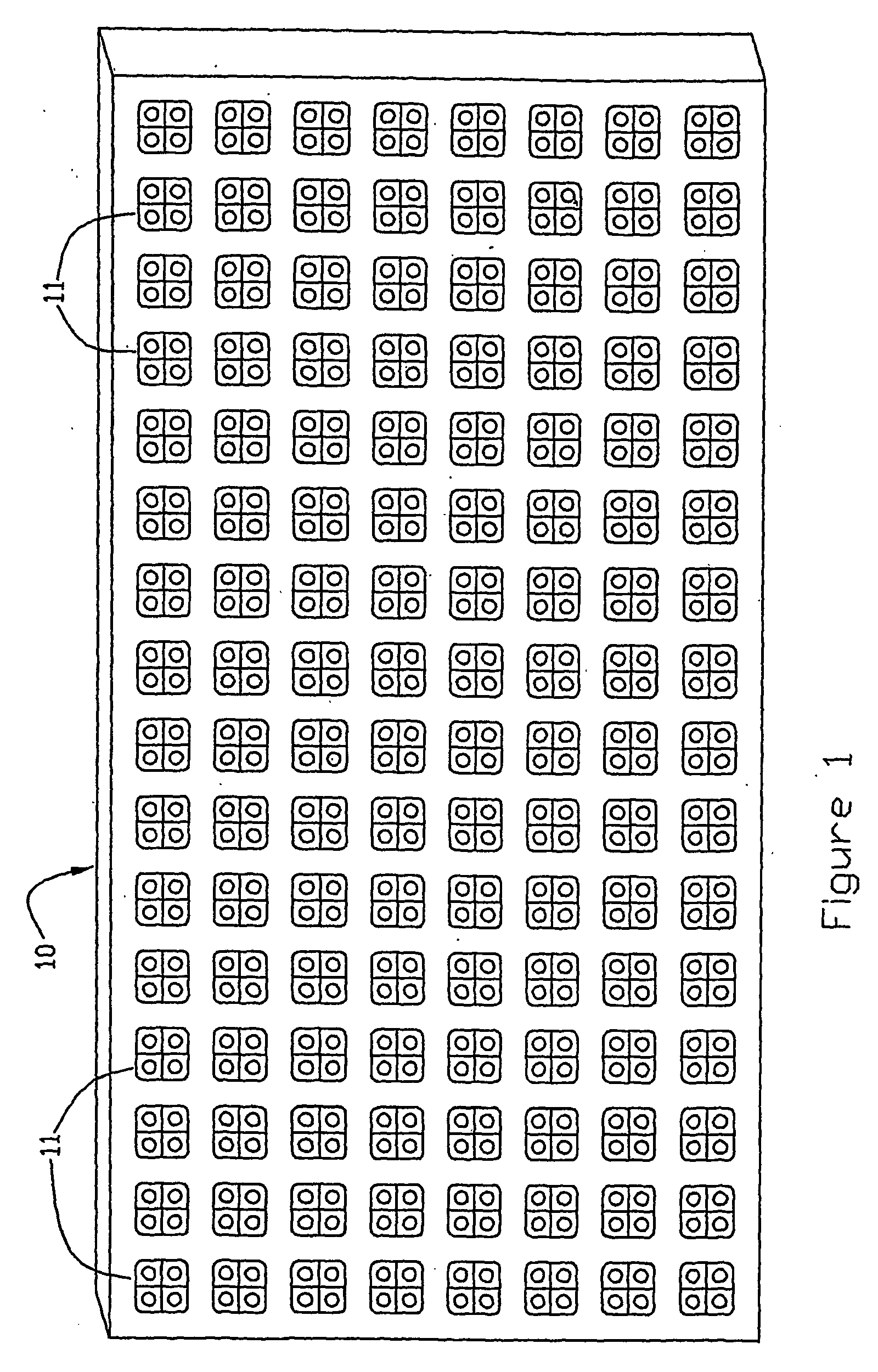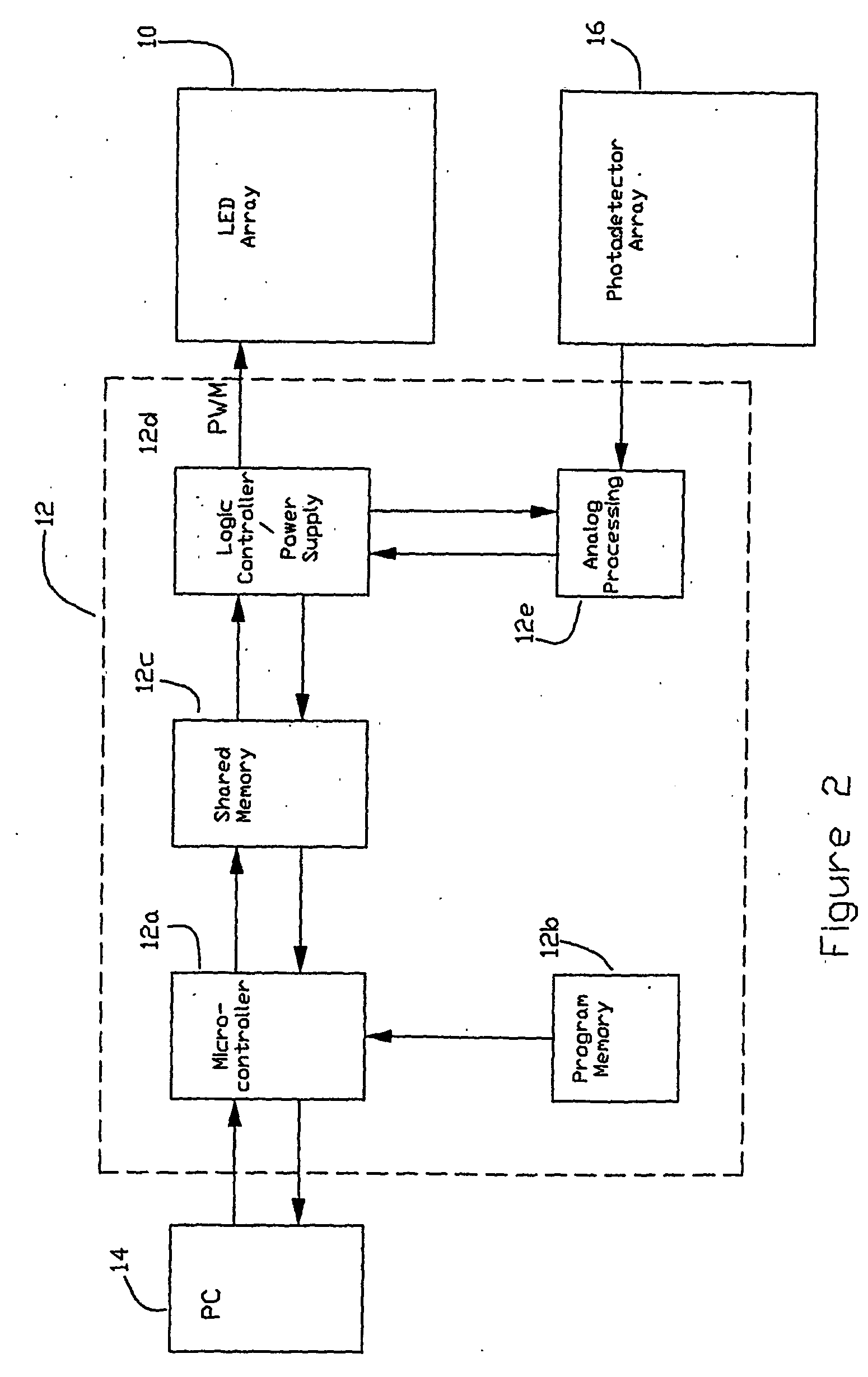Led illumination source/display with individual led brightness monitoring capability and calibration method
a technology of led illumination source and led brightness, applied in the field of led illumination source/display, can solve the problems of reducing the negative effect of initial quality, affecting the growth potential of such displays, and not being able to display a larger series of ideas
- Summary
- Abstract
- Description
- Claims
- Application Information
AI Technical Summary
Benefits of technology
Problems solved by technology
Method used
Image
Examples
Embodiment Construction
[0045] Use of an Internal Photodetector to Measure the Emitted and Ambient Light An LED illumination source or display made up of an array of modules with each module comprising individual LED groups or pixels, with each pixel constituting a finite area or smallest increment of the source or display, is described in our co-pending U.S. application Ser. No. 10 / 705,515 (“'515 application”), filed Nov. 16, 2003, entitled Video Display Apparatus and the '605 patent. The contents of the '515 application and the '605 patent are incorporated herein by reference.
[0046] Referring now to the figures, FIG. 1 illustrates the LED video display module or array 10 as described in the '605 patent in which the array is comprised of individual pixels (picture elements) 11. It is to be understood that a video display is conveniently constructed of individual modules which are assembled in an array to make up the completed sign or billboard. The term “array” as used herein shall mean an individual mod...
PUM
 Login to View More
Login to View More Abstract
Description
Claims
Application Information
 Login to View More
Login to View More - R&D
- Intellectual Property
- Life Sciences
- Materials
- Tech Scout
- Unparalleled Data Quality
- Higher Quality Content
- 60% Fewer Hallucinations
Browse by: Latest US Patents, China's latest patents, Technical Efficacy Thesaurus, Application Domain, Technology Topic, Popular Technical Reports.
© 2025 PatSnap. All rights reserved.Legal|Privacy policy|Modern Slavery Act Transparency Statement|Sitemap|About US| Contact US: help@patsnap.com



